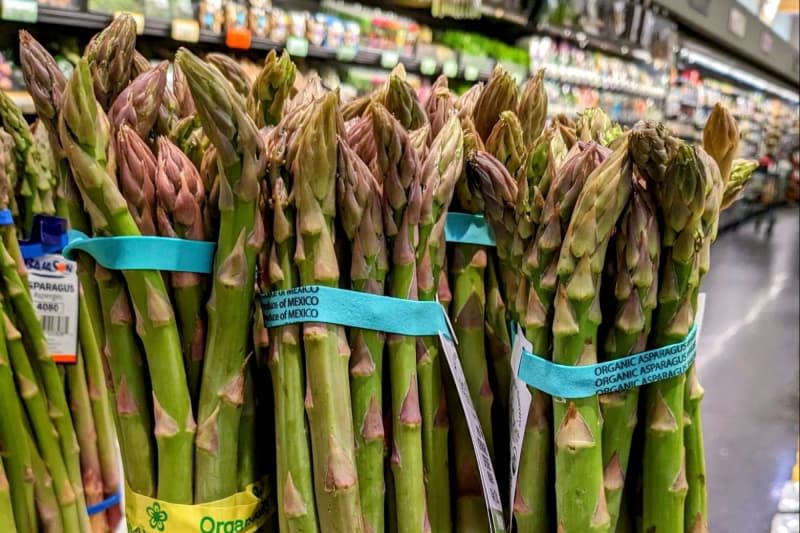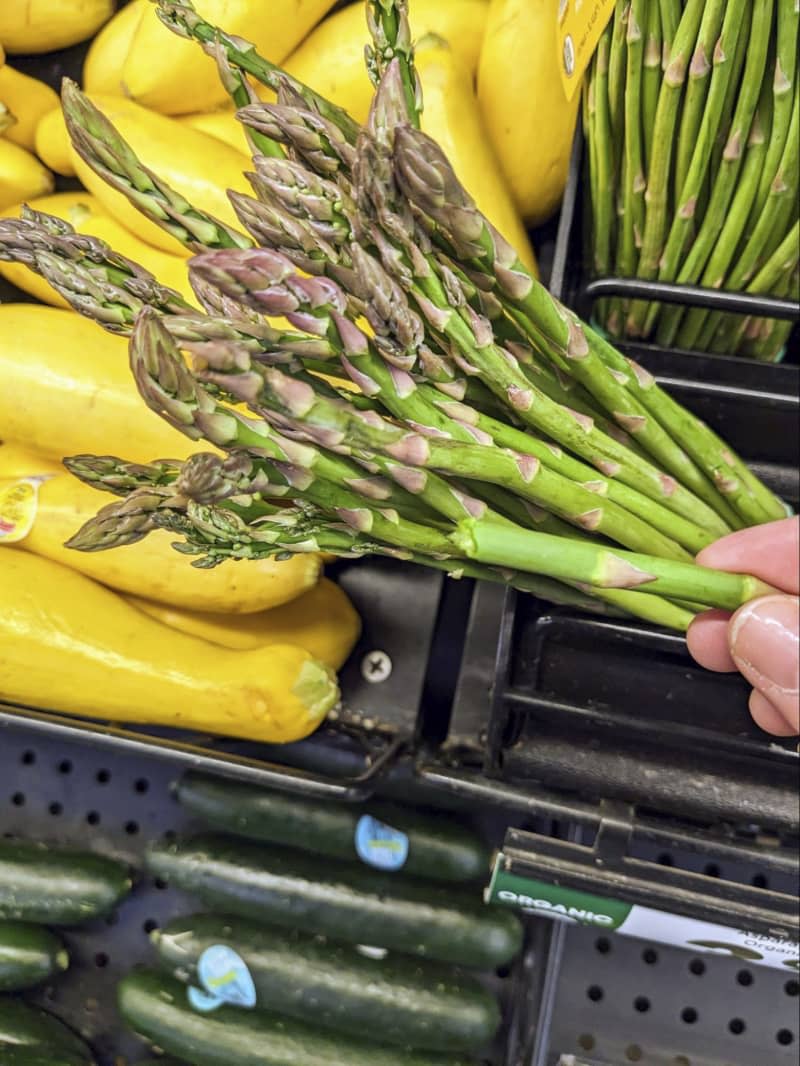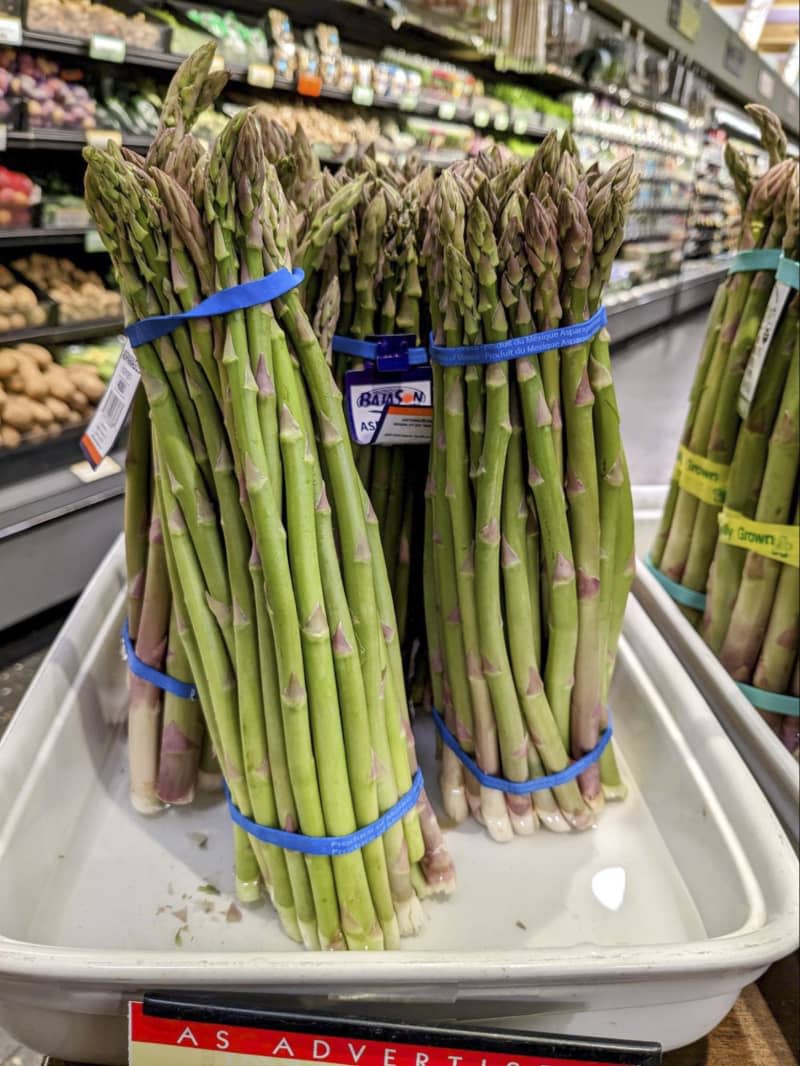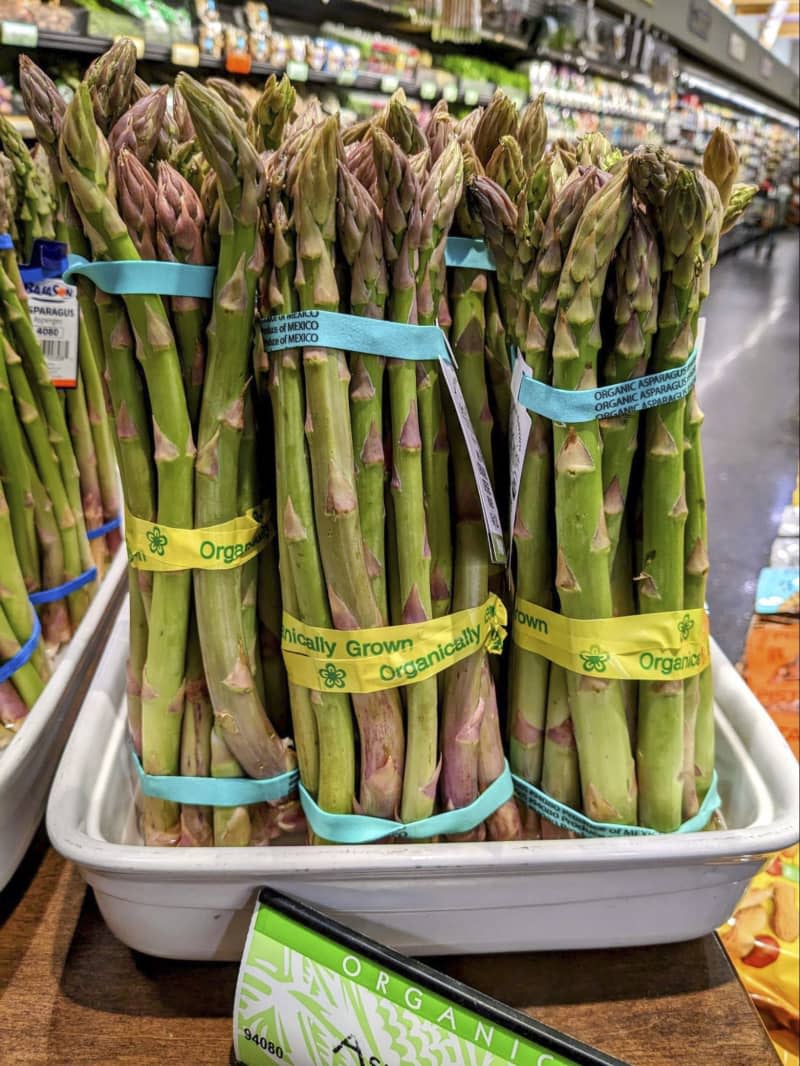Why You Should Always Use This One Rule to Pick Out Asparagus

Early spring is synonymous with asparagus. Every April, having had my fill of stodgy root vegetables all winter long, I become as giddy as a school girl at the sight of the leggy perennial vegetable in the produce department. Spring is HERE! But at about $4 a pound, I’ve got to pick wisely, or I’ll get burned — again.
I’ve heard a litany of ways to pick the best bunch of asparagus. From the thickness of the stalk to the tightness of the tips (a sign the stalks may be old and woody), I’ve heard it all. Yet I still end up with the bitter or woody (or both) bunch often enough. I wondered if there’s a definitive way to determine if I’ll get a bunch of sweet, juicy, crisp spring joy.

Why You Should Always Use the “Snap” Rule to Pick Out Asparagus
I turned to Josh Alsberg, owner of Rubinette Produce Market in Portland, Oregon, for the scoop.
“Snap a stalk in half and taste it raw. It should be sweet and crunchy. If that stalk isn’t tasty, don’t buy it.” (If you have any doubts if this is OK, just ask a produce clerk or manager; as Alsberg points out, it’s common to ask for tastes of apples, oranges, and other produce, so why not asparagus?) All of the asparagus at that particular grocery store probably came from the same grower at the same time, so it’s best to move on to another store or return when a fresh crop comes in.

But before you snap off a spear and taste it, make sure it’s even worth your time. Firm, not floppy, stalks are going to be best. The tips should be tightly closed; if they’ve started to “fern out,” then that’s a sign of aging and they are going to be fibrous. Avoid any asparagus that are slimy, withered, or wrinkly on the ends; they weren’t handled well after picking and won’t be worth the taste test.
As for the thickness of the stalks, that’s a matter of personal preference, shares Alsberg. Thicker stalks aren’t older — they are simply sprouted from an older plant crown. Thin asparagus are sprouted from a younger plant. He recommends blanching or steaming pencil-thin stalks, which keeps them from overcooking and retains their delicate texture.

As for thicker asparagus, Alsberg recommends trimming a half inch from the bottoms (rather than snapping) when prepping the spears. Where the stalk snaps is no indication of where the stalk changes from tender to too fibrous to eat and it wastes a lot of the edible portion. Use a vegetable peeler instead to peel away the fibrous layers on the bottom two inches until you get to the pale, tender center. “Coat them with a liberal amount of olive oil, salt, and pepper, and grill or roast them until they are just fork tender, with a little crunch, even,” he adds.
Alsberg stresses that locally grown asparagus bought in season is always going to be better than a product that has been shipped from a long way away. “Asparagus is a grass, and it’s about 93% water, so asparagus that’s fresh from the soil is going to be juicier and sweeter than spears that have been sitting on a truck or in a warehouse drying out.”
Once you find your perfect, sweet, just-picked bunch, it’s best to use them as soon as possible. Store them in the fridge upright and stem side down in a container with a few inches of water in the bottom to keep them plump. Cover the whole setup loosely with a plastic bag. And keep them away from apples, warns Alsberg; they release gasses that will quickly cause your perfect bunch of asparagus to turn to slime faster than you can steam a skinny stalk.
Do you have a foolproof produce hack to share? Tell us about it in the comments below.

